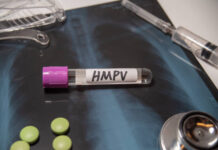Early Detection Saves Lives: The Role of ICG in Cancer Surgeries
Poonam, a resident of Kanpur, felt relieved when MRI and PET scans confirmed her endometrial cancer was in its early, manageable Stage 1. She traveled to Pune for a routine hysterectomy. However, during surgery, doctors used Indocyanine Green (ICG)—a fluorescent dye—to perform a sentinel node mapping. This advanced technique revealed three tiny cancerous lymph nodes that conventional imaging had failed to detect. The surgeons removed them promptly, and after follow-up radiotherapy, Poonam remains cancer-free a year later.
Sheela from Haryana, however, had a different experience. Without ICG, surgeons removed lymph nodes indiscriminately, yet they missed critical ones. This oversight led to cancer recurrence in an undetected area, emphasizing the crucial role of ICG-guided lymph node detection in improving surgical outcomes.
ICG: Transforming Cancer Detection and Surgery
ICG dye has revolutionized oncology surgeries worldwide, particularly for breast, colorectal, and esophageal cancers. Advanced cancer centers in India, equipped with laparoscopic and robotic systems, frequently use this technique to identify cancerous lymph nodes with precision.
“Before ICG, surgeons often removed lymph nodes closest to the tumor, assuming they were cancerous. This approach led to high recurrence rates,” explains Dr. Shailesh Puntambekar, a Pune-based robotic onco-surgeon. “ICG technology allows us to precisely target and remove only the affected nodes, reducing recurrence, minimizing unnecessary surgeries, and improving survival rates.”
Despite its life-saving potential, the dye is highly affordable, costing only ₹1,200 per patient.
Clinical Evidence: ICG Improves Cancer Survival Rates
A 2020 meta-analysis published in The Lancet Oncology reported that sentinel node biopsies using ICG reduced cancer recurrence rates by 30% compared to traditional methods. Another study by the US National Cancer Institute showed that ICG adoption in early-stage breast cancer surgeries increased survival rates from 75% to over 92%.
Challenges Hindering Widespread Adoption in India
Despite its advantages, ICG is not widely used for uterine and endometrial cancer surgeries in India. Experts cite several logistical and systemic hurdles:
- Technical Challenges in Open Surgeries
The uterus is located deep inside the body, requiring a per vaginal injection of ICG before surgery. This can be challenging for surgeons using traditional methods. Robotic-assisted hysterectomies make the procedure easier, but open surgeries pose difficulties. - High Dependence on Open Surgeries
Nearly 80% of endometrial cancer surgeries in India are open procedures, often involving extensive lymph node removal. Some surgeons prefer open surgeries for higher professional fees and procedural control, inadvertently limiting ICG’s adoption. - Expensive Imaging Equipment
Detecting ICG dye in open surgeries requires a specialized ‘spy’ camera costing around ₹25 lakh. This financial barrier prevents many hospitals from integrating the technology. - Lack of Trained Laparoscopic Surgeons
India has only 7,500 gynecological surgeons trained in laparoscopy, compared to 45,000 performing open surgeries. However, experts argue that the learning curve for ICG is not steep. “Surgeons can become proficient after observing just a few cases and performing guided procedures,” says Dr. Rudra Prasad Acharya, secretary of the Indian Association of Surgical Oncology.
ICG in India: A Push for Greater Adoption
Although many cancer centers in India still lag in using ICG, leading hospitals have pioneered its application. Institutions like Hyderabad’s Basavatarakam Indo American Cancer Hospital, Bengaluru’s Aster Group, and AIIMS Delhi have demonstrated remarkable clinical benefits of ICG in various cancer surgeries.
As reported by TOI, The Indian Council of Medical Research (ICMR) reports that 1.75 lakh new cases of uterine and endometrial cancers are diagnosed annually in India. With 90% of these detected at Stage 1, expanding ICG usage could significantly improve survival rates and reduce unnecessary surgeries.
“Sentinel node mapping with ICG should be a standard surgical protocol, especially for early-stage uterine and endometrial cancers,” urges Dr. Sunita Tandulwadkar, national president of the Federation of Obstetric and Gynaecological Societies of India. “It’s time to shift our focus towards patient outcomes rather than procedural preferences.”
A Paradigm Shift in Cancer Care
ICG dye is a cost-effective, efficient, and life-saving technology that needs widespread implementation in India’s cancer care landscape. While logistical and financial barriers exist, experts agree that prioritizing patient survival over surgical convenience is essential. As awareness grows and more hospitals adopt ICG-based sentinel node mapping, India can take a major step forward in providing precision-driven, patient-centric cancer treatment.























